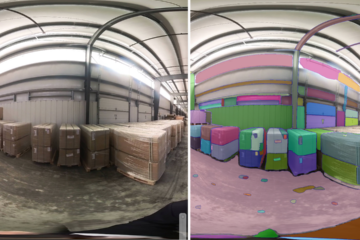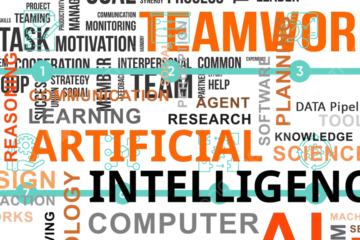Mastering Data Annotation for AI: Essential Techniques, Tools, and Expert Tips for High-Quality Machine Learning Models
In the rapidly evolving world of Artificial Intelligence (AI), data is the cornerstone upon which powerful models are built. However, raw data alone is not sufficient to create effective AI systems; it must be carefully labeled and structured to be useful for machine learning. This process, known as data annotation, plays a crucial role in the development of AI systems, particularly in fields like Natural Language Processing (NLP), Computer Vision (CV), and Speech Recognition. In this article, we will explore the importance of data annotation, the various types of annotation, tools used, challenges faced, and best practices to ensure high-quality annotated data.
The Importance of Data Annotation in AI
Data annotation is the process of labeling or tagging data to make it understandable to machine learning models. Without annotated data, AI models would be unable to recognize patterns or make predictions. For example, in computer vision, data annotation might involve labeling images with the objects they contain, such as “cat,” “dog,” or “car.” In NLP, it could involve tagging text with parts of speech or named entities.
High-quality data annotation is essential for several reasons:
- Training Machine Learning Models: Labeled data is required to train supervised machine learning models. The model learns to map input data to the correct output by analyzing the labeled examples.
- Improving Model Accuracy: The quality and quantity of annotated data directly impact the performance of AI models. More precise annotations lead to better model predictions.
- Ensuring Model Generalization: Well-annotated data helps models generalize better to new, unseen data. This is particularly important in real-world applications where models must handle diverse inputs.
- Reducing Bias: Proper data annotation can help mitigate biases in AI models. Annotators must be mindful of labeling data in a way that does not introduce or perpetuate biases.
Types of Data Annotation
Data annotation can take many forms depending on the type of data and the specific AI application. Below are some common types of data annotation:
1. Image Annotation
Image annotation involves labeling images for tasks such as object detection, image segmentation, and classification. There are several methods of image annotation:
- Bounding Boxes: Annotators draw rectangles around objects in an image. This is commonly used in object detection tasks.
- Polygons: Annotators outline objects with polygons, which is useful for more precise object localization, especially when objects are irregularly shaped.
- Semantic Segmentation: Every pixel in an image is labeled with a class, providing detailed information about the image’s content. This is used in tasks where understanding the full context of an image is necessary.
- Image Classification: The entire image is labeled with a single class, such as “cat” or “dog.” This is one of the simplest forms of image annotation.
2. Text Annotation
Text annotation is crucial for NLP applications and involves labeling text data for tasks like sentiment analysis, named entity recognition (NER), and part-of-speech tagging. Common types of text annotation include:
- Named Entity Recognition (NER): Annotators label entities in text, such as names of people, organizations, dates, and locations.
- Sentiment Annotation: Text is labeled according to the sentiment it expresses, such as positive, negative, or neutral.
- Linguistic Annotation: This involves tagging parts of speech, syntax, or other grammatical structures within text.
- Text Classification: Entire documents or sentences are labeled with categories, such as spam or not spam, or by topics like sports, politics, or technology.
3. Audio Annotation
Audio annotation is used in tasks like speech recognition and emotion detection in voice. It involves labeling audio data, often in conjunction with transcribing speech. Common types of audio annotation include:
- Speech Transcription: Annotators convert spoken language in audio files into text.
- Speaker Identification: Different speakers in an audio file are labeled, which is important in multi-speaker environments.
- Emotion Annotation: Audio files are labeled according to the emotion expressed, such as happiness, sadness, or anger.
4. Video Annotation
Video annotation is similar to image annotation but extends to sequences of frames, making it more complex. It is used in applications like action recognition, object tracking, and video classification. Types of video annotation include:
- Object Tracking: Annotators label objects in video frames and track their movement across frames.
- Action Recognition: Videos are labeled with the actions taking place, such as “running,” “jumping,” or “driving.”
- Event Detection: Specific events within a video are labeled, such as a car crash or a goal being scored in a sports video.
Tools for Data Annotation
Several tools are available to assist with data annotation, each catering to different types of data and use cases. Some popular tools include:
- Labelbox: A powerful tool for annotating images, text, and video, with features for managing teams and workflows.
- Label Studio: An open-source data labeling tool that supports various data types, including text, images, audio, and video.
- SuperAnnotate: A tool that specializes in image and video annotation, offering advanced features for bounding boxes, polygons, and semantic segmentation.
- Prodigy: A tool designed for annotating text, commonly used for NLP tasks. It offers active learning features to streamline the annotation process.
- VGG Image Annotator (VIA): An open-source tool for image and video annotation, supporting bounding boxes, polygons, and points.
- Computer Vision Annotation Tool (CVAT) An open-source tool designed specifically for annotating image and video data, making it a popular choice for projects requiring precise and scalable annotation in computer vision tasks.
Challenges in Data Annotation
While data annotation is critical to the success of AI models, it is not without its challenges. Some of the key challenges include:
1. Time-Consuming Process
Annotation can be labor-intensive and time-consuming, especially for large datasets. This is particularly true for tasks like semantic segmentation or video annotation, where each frame or pixel needs careful labeling.
2. Maintaining Consistency
Ensuring consistency in annotations across different annotators or even the same annotator over time can be difficult. Inconsistent annotations can lead to noisy data, which negatively impacts model performance.
3. Handling Subjectivity
Certain types of annotation, especially in text and audio, can be subjective. For example, sentiment analysis may vary depending on the annotator’s interpretation of the text. Establishing clear guidelines and conducting regular training sessions can help mitigate this issue.
4. Quality Control
Ensuring the quality of annotations is crucial. This often involves multiple rounds of review and validation, which can add to the time and cost of the annotation process.
5. Scalability
As AI models require increasingly large datasets, scaling the annotation process becomes challenging. Automating parts of the annotation process using machine learning techniques, such as active learning, can help address this issue.
Best Practices for Data Annotation
To ensure high-quality annotated data, it’s essential to follow best practices throughout the annotation process. Some key practices include:
1. Clear Guidelines
Providing annotators with clear, detailed guidelines is essential to ensure consistency and accuracy. Guidelines should include examples of correct and incorrect annotations and explain any subjective aspects of the task.
2. Training and Onboarding
Annotators should be properly trained before starting the annotation process. This includes familiarizing them with the tools, guidelines, and specific requirements of the project.
3. Regular Quality Checks
Conducting regular quality checks can help identify and correct issues early in the annotation process. This can be done by reviewing a random sample of annotations or by having multiple annotators label the same data and comparing results.
4. Feedback Loop
Establishing a feedback loop between annotators and project leads can help address any issues or questions that arise during the annotation process. This can improve the overall quality of the annotations and ensure that the project stays on track.
5. Use of Automation
Where possible, leverage automation tools to assist with the annotation process. For example, using machine learning models to pre-label data can significantly reduce the workload for human annotators.
Why Data Annotation is the Secret Sauce for Success ?
Data annotation is a critical component in the development of AI systems. It transforms raw data into a form that machine learning models can understand, enabling them to recognize patterns, make predictions, and ultimately perform complex tasks. While the annotation process can be challenging, following best practices and leveraging the right tools can ensure high-quality, consistent data that leads to more accurate and reliable AI models.


0 Comments